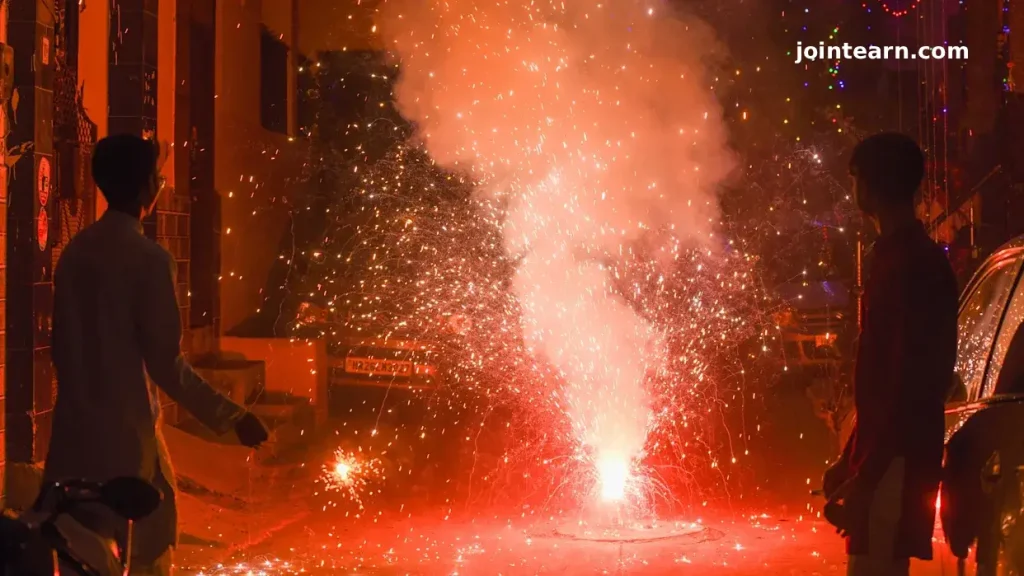
As Delhi’s air quality plunges to hazardous levels, India’s Supreme Court has permitted the sale and use of “green firecrackers” — fireworks claimed to release fewer pollutants — during the upcoming Diwali festival. The decision has drawn mixed reactions from citizens, health experts, and environmental activists, who warn it could worsen the capital’s already toxic smog.
🎆 Court Lifts Ban on Eco-Friendly Firecrackers
Since 2020, Delhi has enforced a complete ban on firecrackers, given their role in worsening pollution levels during the festive season. However, the Supreme Court on Wednesday allowed the limited sale and bursting of green crackers, which are said to emit 20–30% less pollutants and produce minimal ash compared to conventional fireworks.
Manufacturers claim that these eco-friendly versions are a cleaner alternative designed to reduce harmful emissions such as sulfur oxides and nitrogen oxides, which are major contributors to winter smog.
But experts remain skeptical. Environmental scientists argue that even so-called green crackers still release toxic gases and fine particulate matter (PM2.5), which aggravate respiratory diseases and degrade overall air quality.
“There is no such thing as a completely safe cracker,” said environmental activist Sunita Narain of the Centre for Science and Environment (CSE). “In a city already choking on toxic air, any additional emissions are dangerous.”
💨 Delhi’s Air Quality Hits “Severe” Category
The court’s ruling coincided with one of the worst pollution days of the season. According to the Central Pollution Control Board (CPCB), PM2.5 levels across Delhi on Wednesday morning ranged from 300 to 400, with some hotspots crossing the 400 mark — placing air quality in the “severe” category.
At these concentrations, experts warn, even healthy individuals may experience breathing difficulties, while vulnerable groups such as children, the elderly, and heart or lung patients face serious health risks.
To put it in perspective, the World Health Organization (WHO) recommends an average PM2.5 level of 15 µg/m³ — meaning Delhi’s air was 25 to 30 times worse than safe limits.
🌫️ Why Delhi Chokes Every Winter
Each year, Delhi and other parts of northern India face a recurring air pollution crisis during the winter months. A mix of stubble burning in neighboring Punjab and Haryana, vehicular emissions, industrial pollution, and low wind speeds traps toxic air over the capital.
The Diwali celebrations, marked by widespread firecracker use, often push pollution levels off the charts. Despite bans and awareness campaigns, enforcement remains weak.
“Every Diwali morning, residents wake up to an unbreathable city,” said Dr. Arvind Kumar, a Delhi-based pulmonologist. “Hospitals see a sharp rise in asthma attacks, eye irritation, and cardiovascular emergencies.”
⚖️ Supreme Court’s Guidelines on Crackers
According to LiveLaw, the Supreme Court’s order allows the sale and use of green crackers under strict conditions:
- 🔹 Sale Period: From Saturday to Monday, only at government-authorized shops.
- 🔹 Designated Areas: Crackers can be set off only in approved open spaces.
- 🔹 Time Restrictions: A three-hour window for celebrations — one hour in the morning and two hours at night, specifically on Diwali eve and Diwali day.
The bench emphasized that only certified “green crackers” would be allowed, and violators selling banned fireworks could face legal penalties.
Still, experts fear that poor enforcement and widespread availability of illegal crackers could nullify the court’s intentions.
😷 Delhi Government Activates Emergency Pollution Plan
In response to the worsening air, the Delhi government has implemented Stage II of the Graded Response Action Plan (GRAP) — an emergency framework designed to control pollution spikes.
The new restrictions include:
- 🚫 Ban on all activities involving coal and firewood in open spaces
- 🏭 Suspension of construction and demolition work in certain zones
- ⚡ Prohibition of diesel generators for non-essential use
- 🚌 Enhanced public transport and carpooling measures to cut emissions
Despite these measures, environmentalists say that allowing any kind of firecracker during such conditions undermines the government’s pollution-control efforts.
💬 Public Reactions: Joy and Frustration
The ruling has sparked heated debate across social media. Many citizens welcomed the decision, viewing it as a balance between religious freedom and environmental responsibility.
“It’s good that we can celebrate Diwali again — but responsibly,” wrote one user on X (formerly Twitter).
Others, however, criticized the move, arguing that green crackers are merely a symbolic solution.
“Delhi’s air is already poison. Allowing crackers, even ‘green’ ones, is like adding fuel to the fire,” another commenter said.
🌎 The Bigger Picture: A Festival Under the Shadow of Smog
For millions, Diwali symbolizes light conquering darkness. But in recent years, its celebrations have been clouded by smoke, anxiety, and controversy.
Environmental experts stress that while cultural traditions are important, India must rethink how festivals are celebrated in the era of climate change and urban pollution.
“Celebrating responsibly doesn’t mean giving up joy,” said activist Narain. “It means ensuring future generations can breathe clean air while they light their diyas.”
Leave a Reply